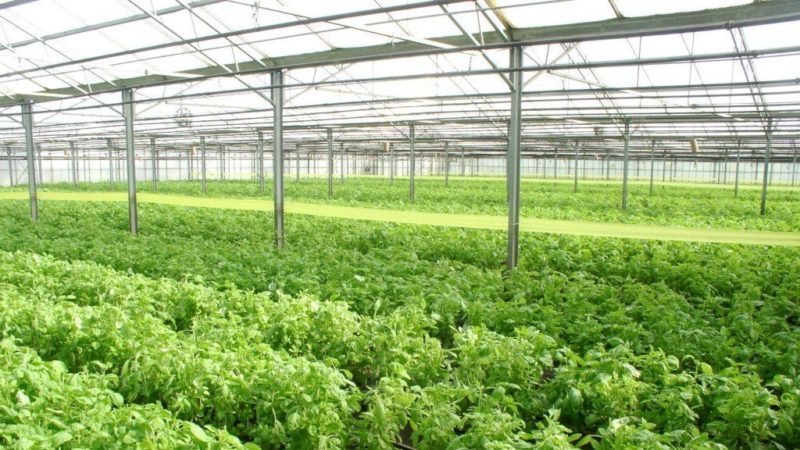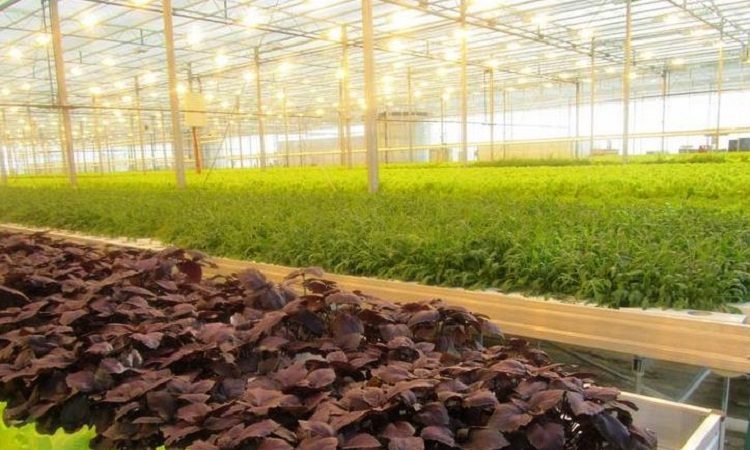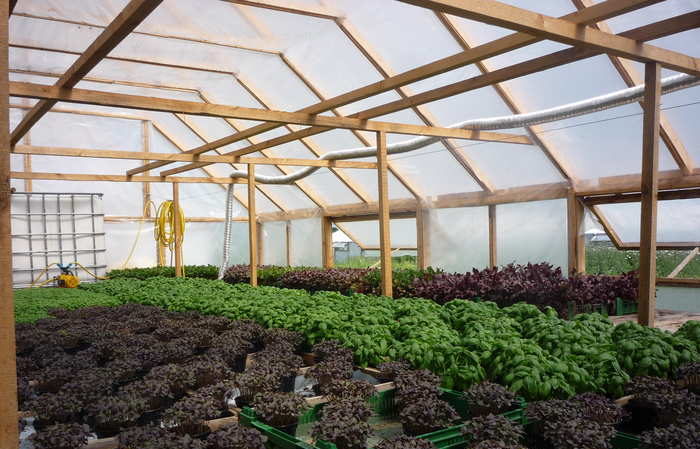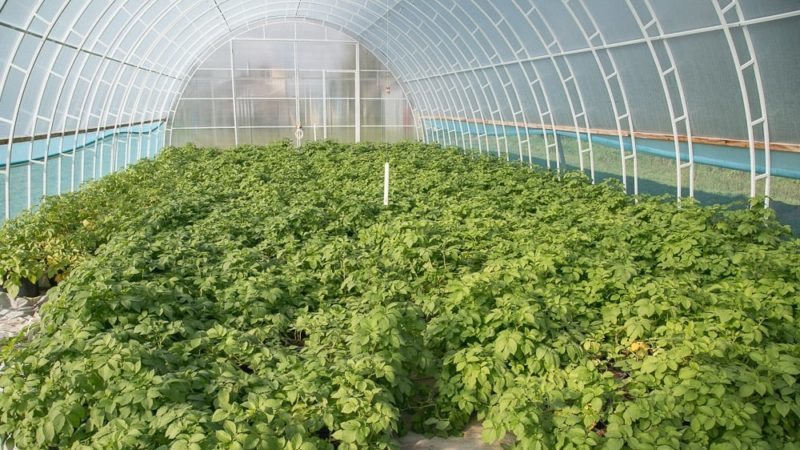A beginner's guide to planting basil in a greenhouse
Basil contains many beneficial substances and can enhance the taste of almost any dish. Its homeland is the tropics, but after spreading around the world, the plant learned to grow in mid-latitudes. This became possible thanks to breeders who slightly changed its climate requirements. It is best to grow the plant in a greenhouse, because there you can artificially create the most favorable conditions. We will tell you when to sow and how to grow basil from seeds.
The content of the article
Features of greenhouse cultivation of basil
The greenhouse method of growing allows you to protect the plant from various pests, makes it possible to consistently maintain the optimal temperature (+ 23 ° ... + 28 ° C) and does not allow the summer sun to burn out the leaves. In a heated greenhouse, with timely feeding, basil receives nutrients all year round, which contributes to the rapid growth of lush greenery.
Variety selection

There is a wide variety of basil varieties that differ from each other in size, growth time, care requirements, leaf color, taste, and more.
The following varieties are grown in the greenhouse:
- Violet... Leaves come in a variety of shades. Especially appreciated in Caucasian and Indian cuisine as a spicy specific seasoning for various dishes and sauces.
- Citric - a lush, spreading bush of pale green color, the leaves of which smell like lemon.
- Cinnamon - a small light green bush whose leaves taste and smell of ordinary cinnamon.
- Camphor (scented) is a bright green lush bush that exudes a clove scent. Often used in Mediterranean cuisine.
- Yerevan - an annual plant used as a versatile seasoning for various dishes. It has wide green leaves.
- Spoon-shaped has light green leaves of a corresponding shape. The taste of the seasoning resembles a cross between bay leaves and cloves. Used in meat dishes, complements tomatoes.
- Baku similar to Yerevan, but has a darkpurple, almost black leaves. It tastes like a mixture of cloves and mint, added to oriental dishes.
Dates of planting basil in a greenhouse

Basil is planted in heated greenhouses at any time of the year, provided that it is possible to constantly maintain a stable temperature. If we are talking about an ordinary greenhouse, then seedlings are planted in early April (in the south - in early March), and in open ground transferred one month after landing... You can plant seeds directly into greenhouse land at the end of April. It is desirable that the greenhouse be warmed up by this time. In case of frost, the procedure should be rescheduled.
Greenhouse preparation
All garbage in the greenhouse is preliminarily removed, up to cobwebs and dust on artificial surfaces, and then disinfected.
Soil
The soil is renewed (at least its upper layer), humus, peat and sand are added, mixed evenly and at the same time loosened the earth. Then the land is treated with copper sulfate and fertilized with minerals. After that, the beds are made.
Planting material
Before sowing for seedlings, the seeds are wrapped in gauze, washed with hot water (but not boiling water) and left in this form for a day. They will be covered with a slippery coating, which means they are ready to plant.
2 weeks before the transfer of seedlings to open ground, gradually reduce the temperature in the room where the basil grows.The land is slightly moistened before planting.
How to properly plant basil in a greenhouse
Basil is planted in a greenhouse with seeds and seedlings.
Seeds
The beds are prepared in advance: moistened with warm water, make furrows up to 1 cm deep at a distance of 30 cm from each other. Place the seeds in the ground at a distance of 3-5 cm from each other. Cover them with foil until the first seedlingswhich will appear in about 10 days. When the plants begin to develop, they are planted at a distance of 10 cm from each other.
Seedlings
Seedlings in open ground are planted 1-1.5 months after planting the seeds (there should be several true leaves on the bushes). You need to place seedlings shallowly, at a distance of 10-20 cm - the more luxuriant the bushes of a particular varieties, the more it is.
What can you plant next to

The best neighborhoods for basil are tomatoes and eggplants. Overall, it adapts well to most vegetables.
Despite the loyalty of the basil to its neighbors in the garden, some plants should not be planted nearby:
- cucumbers;
- cabbage;
- radish;
- radish;
- dill.
Further care
When growing basil in the greenhouse, the following parameters are important:
- Stable temperature. It can fluctuate between + 23 ... + 28 ° С, but the drops should not be sharp. It must not be allowed to fall below + 15 ° С, otherwise the plants may die.
- Watering. It is held once a week. You can pour water to each root separately or use a wide watering can - this is more convenient and faster. The water is taken at room temperature. The humidity in the room should not be higher than 70%, so sometimes the greenhouse is ventilated.
- Weeding. Despite the greenhouse conditions, weeds can germinate here too. It is important to get rid of them in a timely manner. The soil is loosened after each watering.
- Top dressing. The procedure is carried out every 2 weeks using nitrogen-phosphorus-potassium fertilizers.
- Cut. The first harvest is carried out when the bushes reach 12-20 cm in height (depending on the variety). When the leaves grow to the correct size, they are cut off, leaving a couple of them intact.
Features of planting in a heated greenhouse in winter

If the greenhouse has strong and heat-resistant walls, it is suitable for winter growing of basil. It is important to maintain a stable, suitable temperature, observe watering conditions, increase the amount of feeding and install additional light sources. Basil grows more slowly in winter and has somewhat sluggish leaves. It is necessary to carefully monitor the ventilation: the plant needs fresh air, but low temperatures and high humidity should not be allowed.
Conclusion
Growing basil in a greenhouse is easy. He does not need excessive care and expensive fertilizers. It is grown at any time of the year, if the greenhouse is properly equipped for the onset of cold weather. Basil is well adjacent to most garden crops, so it is not necessary to make separate beds for it away from other seedlings.